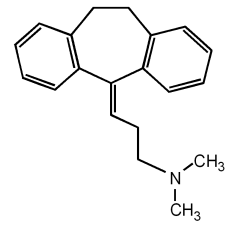Systemic absorption of amitriptyline and buspirone after oral and transdermal administration to healthy cats.
Mealey KL, Peck KE, Bennett BS et al. J Vet Intern Med 2004; 18(1): 43-46.
At the time of writing, the authors were affiliated with either the College of Veterinary Medicine, Washington State University, Pullman, Washington, or the Texas Veterinary Medical Diagnostic Laboratory, Texas A & M University, College Station, Texas. They state that urine spraying by cats is a serious and common behavioral problem and has successfully been treated by the use of buspirone as well as by amitriptyline. Unfortunately, veterinary formulations of many drugs are not marketed. In addition, cats are resistant to administration of oral medications including solids as well as liquids. Compounding pharmacists have been advertising transdermal gels as an alternative route of administration for cats, including transdermal buspirone and amitriptyline. The authors set out to discover if transdermal absorption of these two drugs in cats was similar to systemic absorption following oral administration. They describe the six cats used in the study, the drug formulations and the experimental protocol. Transdermal Pluronic lecithin organogels (PLOs) were obtained from a veterinary compounding pharmacy. In addition, one-month supplies of buspirone at 2.5 mg/0.1 mL and amitriptyline at 5 mg/0.1 mL were ordered for two fictitious patients being treated at the University's veterinary teaching hospital. Preparation and also administration of the drug-containing gels are briefly described. The commercial immunoassays used to detect plasma levels of buspirone and amitriptyline are described in great detail. Their results indicated thattransdermal absorption of both buspirone and amitriptyline were poor relative to oral administration of these drugs. In their discussion, the authors state, "Results of this study raise doubts about the reliability of pluronic F127 (PLO) gels as vehicles for the transdermal route of administration for buspirone and amitriptyline in cats. In the single-dose transdermal studies reported here, neither drug demonstrated predictable, consistent systemic absorption." They state that more studies are needed and conclude that, "Failure of a cat to respond to a pharmacologie trial of buspirone or amitriptyline administered transdermally may simply result from failure of the drug to reach therapeutic concentrations."
References
1. [No author listed.] U.S. Food and Drug Administration. Center for Veterinary Medicine. Animal Medicinal D rug Use Clarification Act of 1994 (AMDUCA). [U.S. Food and Drug Administration Website.l Available at: www.fda.gov.cvm/index/amduca/ amducatoc.htm. Accessed July 5, 2004.
2. Federal Register. (1996) Nov 7; 61(217): 57731. [U.S. Food and Drug Administration Website.] Extralabel drug use in animals; final rule. Available at: www/fda.gov/cvm/index/amduca/amducafr.htm. Accessed July 5, 2004.
3. [No author listed.] American Veterinary Medical Association. [American Veterinary Medical Association Website.] AVMA Position Statements. Compounding (Approved by AVMA Executive Board, November 2000). Available at: www.avma.org/policies/compounding.htm. Accessed July 5, 2004.
4. [No author listed.] American Veterinary Medical Association. [American Veterinary Medical Association Website.] Extralabel drug use (ELDU): An informational outline of the Animal Medicinal Drug Use Clarification Act (AMDUCA). 1998; Revised June 2003. Available at: www.avma.org/scienact/amduca/amducal.asp. Accessed July G, 2004.
5. [No author listed.] American Veterinary Medical Association. [American Veterinary Medical Association Website.] Extralabel drug use algorithm. Available at: www.avma.org/scienact/amduca/amduca2.asp. Accessed July 6, 2004.
Address correspondence to: Elizabeth Foy, College of Pharmacy, Dalhousie University, Halifax, NS B3H 3J5, Canada. E-mail: elizabeth.foy@dal.ca
Copyright International Journal of Pharmaceutical Compounding Nov/Dec 2004
Provided by ProQuest Information and Learning Company. All rights Reserved



